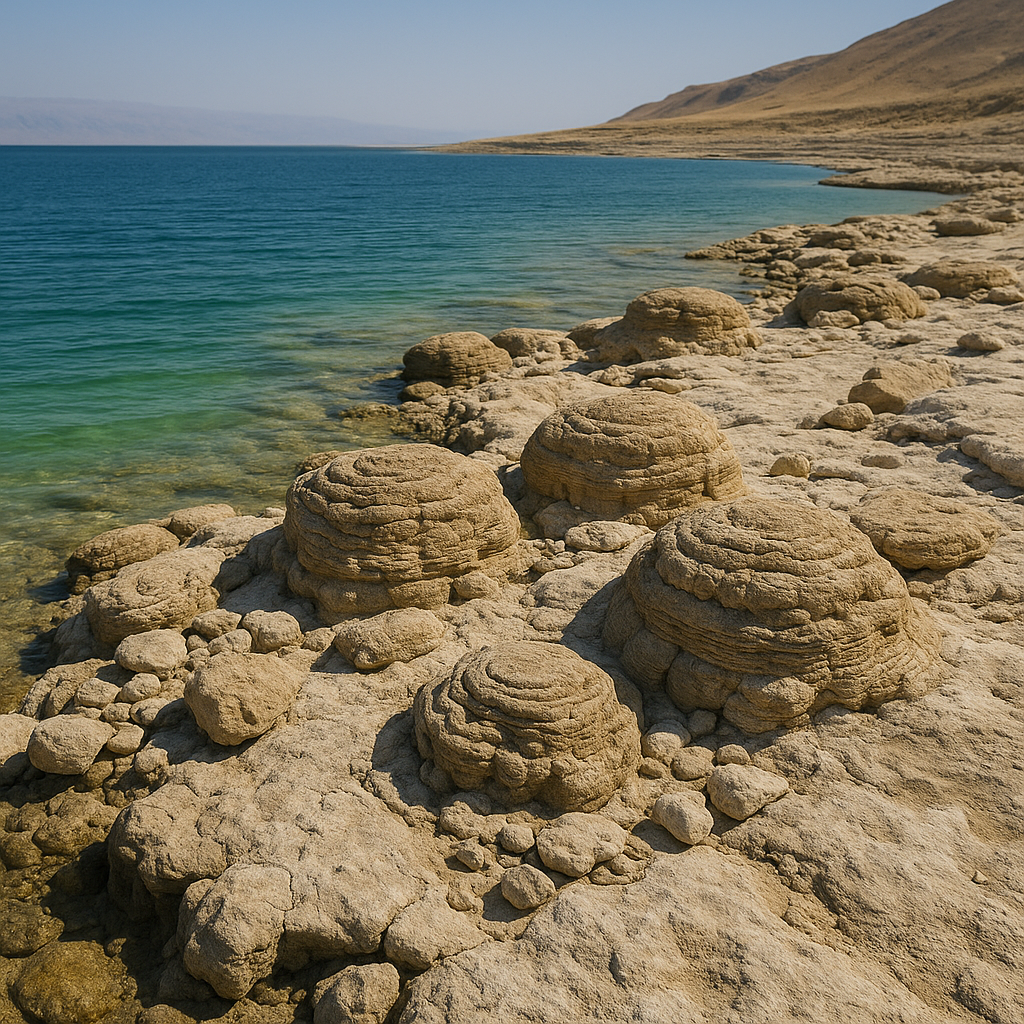Remote sensing and AI team up to map microbial life in Dead Sea rock reefs
Stromatolites in such extreme settings offer critical insight into life’s adaptability and leave behind distinct mineralogical and structural patterns. These biosignatures can persist for millennia, and their detection through remote sensing opens the door to exploring their counterparts on other planets.

In the pursuit of uncovering life’s earliest signatures on Earth and beyond, scientists are now turning to a surprising alliance of artificial intelligence, hyperspectral imaging, and one of Earth’s harshest environments: the Dead Sea. A newly published study titled “Dead Sea Stromatolite Reefs: Testing Ground for Remote Sensing Automated Detection of Life Forms and Their Traces in Harsh Environments” in Remote Sensing explores how machine learning algorithms, coupled with spectral data, can automatically detect stromatolites, ancient microbial structures often regarded as the Earth’s earliest evidence of life.
Using 82 rock samples from a former shoreline in Israel's Ein Bokek region, researchers developed an automated classification model based on the unique hyperspectral signatures of stromatolites and surrounding dolomitic rocks. Their goal was twofold: to build a reliable tool for detecting life-suggestive mineral structures and to lay the groundwork for applying the same technique to planetary exploration, particularly on Mars.
What are stromatolites and Why is the Dead Sea important?
Stromatolites are laminated sedimentary formations created by microbial activity, often found in shallow, sunlit aquatic environments. These structures have existed for over 3.5 billion years and are considered critical in the study of early Earth life. The Dead Sea, known for its hyper-saline waters and low biodiversity, surprisingly hosts both fossilized stromatolites and modern microbialites, particularly in freshwater seep zones along its receding shorelines.
The Ein Bokek site, where the study was conducted, lies approximately 200 meters below sea level and dates to around 25,000–32,000 years ago, during the Last Glacial Maximum. Its ancient stromatolite reefs were largely overlooked in earlier fieldwork due to their similar visual appearance to the surrounding dolomites. However, this outcrop presents ideal conditions for remote sensing: high exposure, low vegetation, and a geochemical setting analogous to conditions believed to have existed on early Mars.
Stromatolites in such extreme settings offer critical insight into life’s adaptability and leave behind distinct mineralogical and structural patterns. These biosignatures can persist for millennia, and their detection through remote sensing opens the door to exploring their counterparts on other planets.
How does hyperspectral remote sensing detect ancient life?
The study employed an Analytical Spectral Devices (ASD) Field Spec 3 spectrometer to collect full-range UV/VIS/NIR/SWIR reflectance data from 350–2500 nm. Each rock sample was scanned at multiple points without surface preparation to simulate in situ detection conditions. The team then trained three machine learning algorithms, logistic regression, K-nearest neighbors, and XGBoost, to classify samples as either stromatolite or dolomite based on spectral signatures.
All three algorithms achieved high prediction accuracy, with true positive rates for stromatolites exceeding 90% and dolomite identification surpassing 80%. Logistic regression performed best overall, with a true positive rate of 98% and true negative rate of 94%.
The models consistently found two spectral regions as the most diagnostic for stromatolite detection: around 1900 nm, associated with water absorption (reflecting the porous nature of stromatolites), and 2310–2325 nm, linked to carbonate absorption features. These wavelengths were statistically significant in both feature importance and Shapley value assessments - two independent techniques used to evaluate which spectral bands contributed most to classification accuracy.
Importantly, dimensionality reduction experiments showed that similar prediction performance could be achieved using as few as 10 bands out of the original 2150. This finding has immense practical value for future satellite or drone applications, where sensor bandwidth and processing power are constrained.
Can this method guide the search for life on Mars?
Beyond Earth, this study’s implications are most profound for planetary science. NASA’s Mars missions, including Perseverance, have already prioritized carbonate-rich terrains as potential biosignature repositories. However, tools like CRISM and SHERLOC depend heavily on detecting subtle mineralogical variations in situ or from orbit. This research directly contributes to that effort by identifying specific SWIR spectral bands, especially around 2300 nm, that can distinguish biologically influenced carbonate formations from ordinary geological background.
Moreover, the authors simulated how their hyperspectral dataset would be read by two current satellite sensors, EnMAP and PRISMA, and found that the diagnostic wavelengths remained valid. This suggests that airborne or satellite platforms equipped with similar sensors could detect microbial biosignatures in inaccessible terrains, both on Earth and beyond.
The Dead Sea site serves as a Mars analog due to its hyper-arid, mineral-rich, and biologically limited conditions. The study affirms that biosignature detection doesn’t necessarily require organic residues; instead, morphological and mineralogical signals preserved through microbial precipitation processes may suffice.
The team further aims to expand the training dataset by sampling a second Dead Sea site. They also plan to test the model using hyperspectral thermal cameras and, eventually, live data from airborne or satellite sensors. These expansions aim to refine the model’s generalizability, ensuring it can accurately detect stromatolites across a wider variety of carbonate settings.
- READ MORE ON:
- AI in geobiology
- machine learning biosignature detection
- remote sensing for ancient life
- automated life detection AI
- how AI detects ancient stromatolites using spectral data
- machine learning models for biosignature identification
- AI tools for mapping ancient microbial life
- remote sensing analogs for Mars biosignatures
- FIRST PUBLISHED IN:
- Devdiscourse










